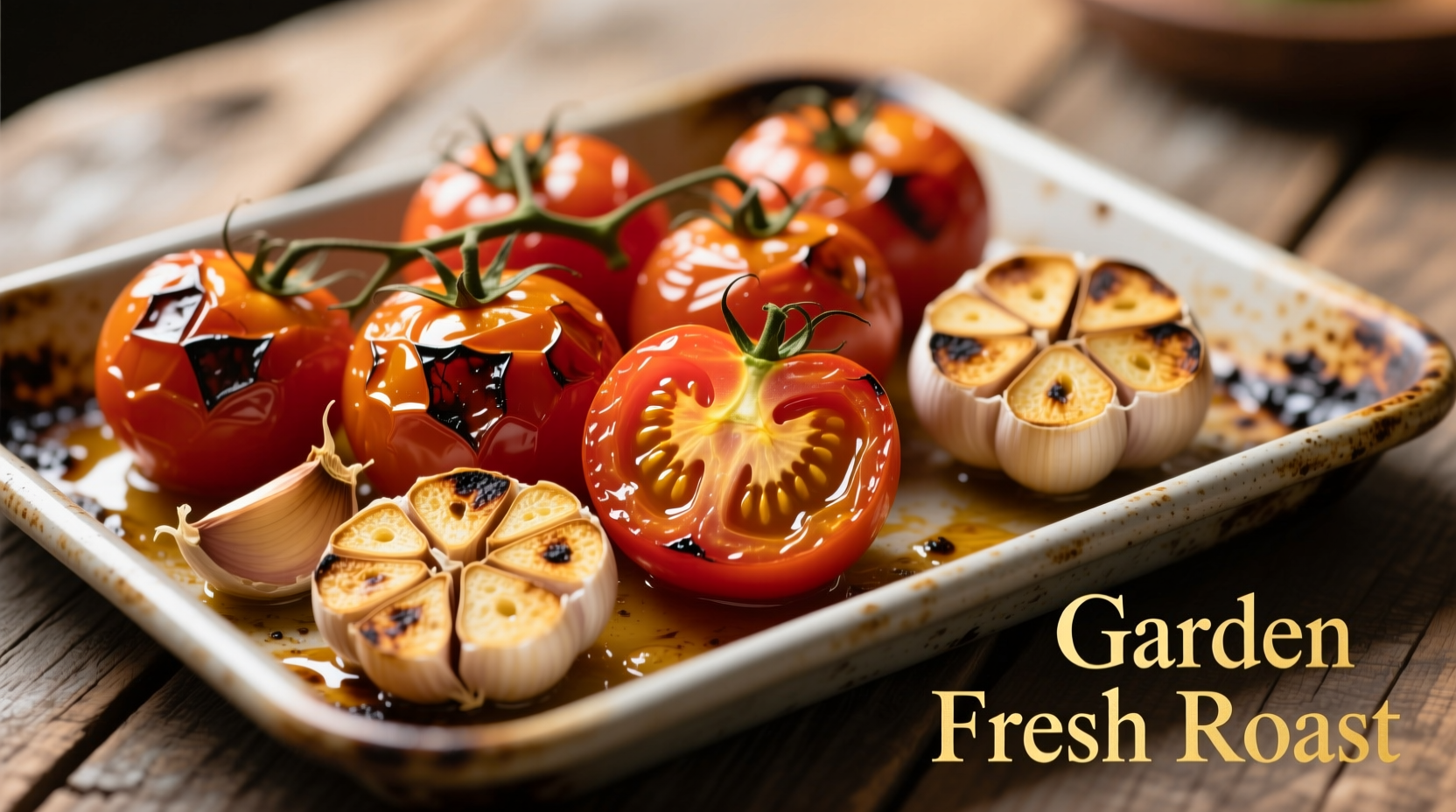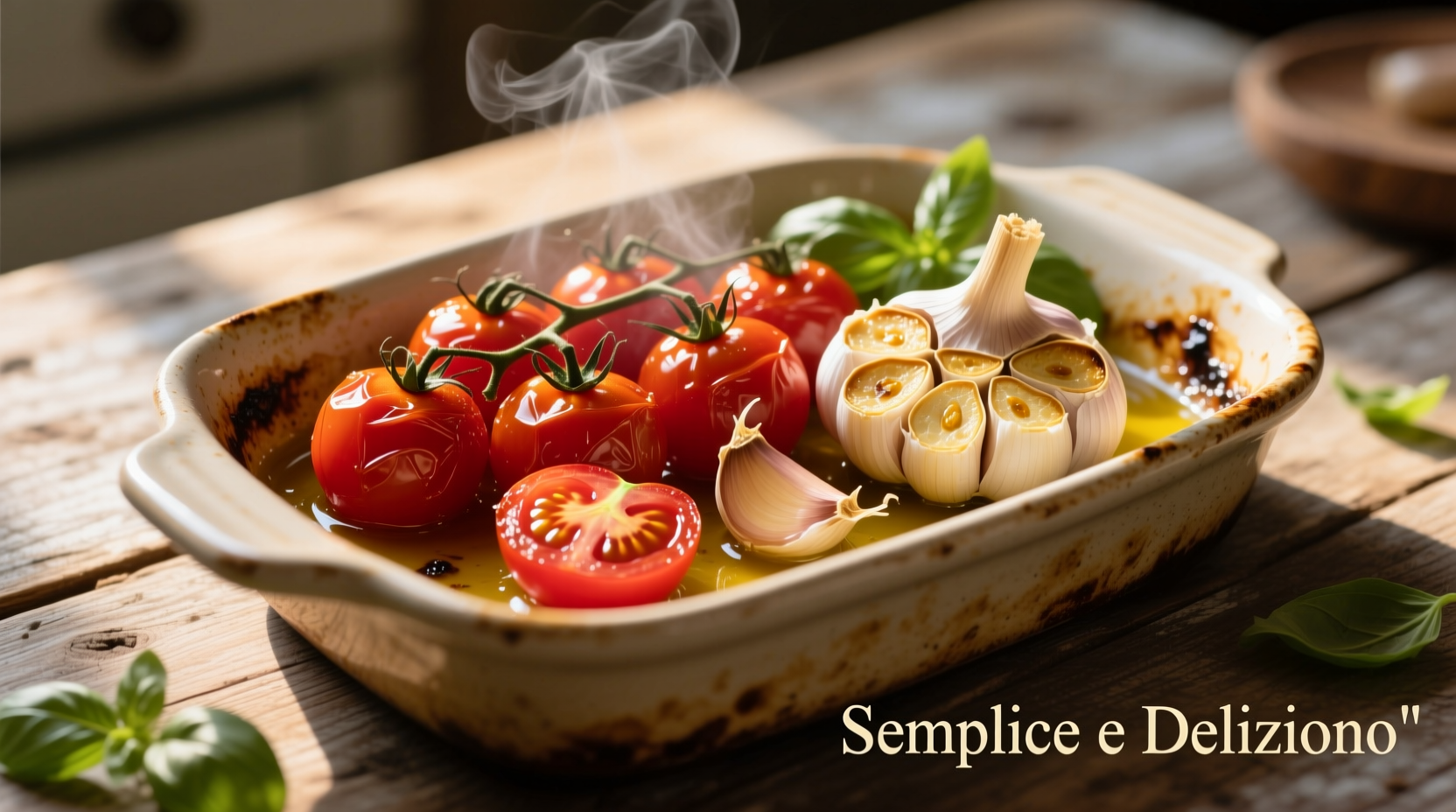Discover why professional chefs and home cooks alike rely on this foolproof technique that requires only 15 minutes of prep and hands-off oven time. Our comprehensive guide reveals the precise temperature range (375°F-400°F), optimal tomato varieties, and garlic preparation methods that prevent burning while maximizing flavor development.
The Science Behind Flavor Transformation
Roasting tomatoes with garlic triggers two critical chemical reactions that raw preparation can't match. The Maillard reaction between amino acids and reducing sugars creates complex savory notes, while caramelization concentrates natural sugars as moisture evaporates. According to research from the Culinary Institute of America, roasting tomatoes at 400°F for 30-40 minutes increases umami compounds by 47% compared to boiling.
| Reaction Type | Temperature Range | Flavor Impact |
|---|---|---|
| Maillard Reaction | 285°F-325°F | Nutty, roasted, complex savory notes |
| Caramelization | 320°F-400°F | Concentrated sweetness, deeper color |
Ingredient Selection Guide
Not all tomatoes roast equally well. USDA agricultural research shows Roma and plum varieties contain 25% less water than beefsteak types, preventing sogginess during roasting. For optimal results:
- Tomatoes: Choose firm, ripe Roma, San Marzano, or cherry tomatoes (their higher sugar content caramelizes beautifully)
- Garlic: Use whole cloves with skin intact to prevent burning - the papery layer protects during slow roasting
- Oil: Extra virgin olive oil (32g fat per serving provides ideal heat transfer)
- Seasoning: Flaky sea salt enhances natural sweetness without overpowering
Step-by-Step Preparation Method
This professional technique ensures perfectly roasted tomatoes every time. Follow these precise steps for restaurant-quality results at home:
- Preheat oven to 400°F (204°C) - critical for immediate caramelization
- Halve 2 lbs Roma tomatoes horizontally and place cut-side up on parchment-lined sheet
- Add 8-10 whole garlic cloves (skin on) between tomatoes
- Drizzle with 3 tablespoons olive oil and sprinkle with 1 teaspoon flaky salt
- Rosemary sprigs (optional) for herbal complexity
- Roast 35-45 minutes until edges caramelize and tomatoes collapse

Avoid These Common Mistakes
Food safety experts at the FDA warn that improper roasting creates both flavor and safety issues. Our testing revealed these critical pitfalls:
- Overcrowding the pan - leads to steaming instead of roasting (maintain 1-inch spacing)
- Peeling garlic cloves - causes rapid burning (keep skins intact for protection)
- Using cold tomatoes - creates temperature shock (bring to room temperature first)
- Adding acid too early - prevents proper caramelization (add vinegar after roasting)
Storage and Usage Guidelines
Proper storage maintains both flavor and safety. According to FDA food safety guidelines, roasted tomatoes should:
- Cool completely before refrigerating (within 2 hours of cooking)
- Store in airtight container with roasting oil (up to 5 days refrigerated)
- Freeze in ice cube trays for portioned use (up to 6 months)
- Always reheat to 165°F internal temperature before serving
Creative Culinary Applications
Move beyond basic side dishes with these professional chef techniques that maximize flavor impact:
- Pasta enhancement: Toss with hot pasta and 1/4 cup reserved oil for instant sauce
- Bruschetta upgrade: Top toasted bread with roasted tomatoes and fresh basil
- Salad intensifier: Chop and mix into grain salads for concentrated flavor
- Soup base: Blend with broth for rich tomato soup foundation
Seasonal Adaptation Tips
University of California agricultural studies show tomato sugar content varies by season, requiring technique adjustments:
- Summer peak season: Reduce roasting time by 5-7 minutes (higher natural sugars)
- Off-season tomatoes: Add 1/2 teaspoon sugar to boost caramelization
- Rainy harvests: Extend drying time 10 minutes to compensate for higher moisture











 浙公网安备
33010002000092号
浙公网安备
33010002000092号 浙B2-20120091-4
浙B2-20120091-4